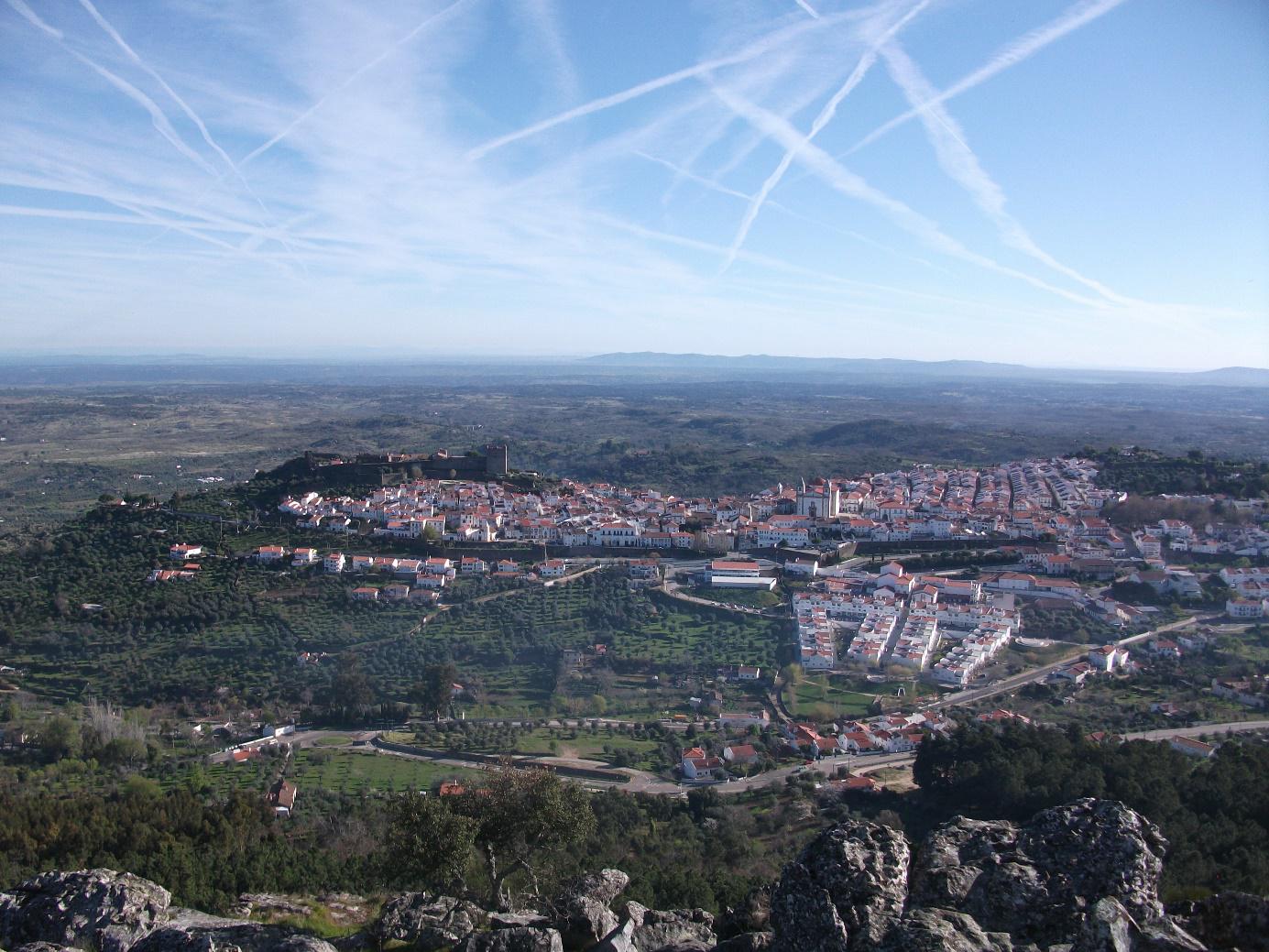 From 14 to 16 March at Castelo de Vide (Portugal) was held an international conference on Small Towns and Environment in History – Pequenas Ciudades e Ambiente – organized by the international network Small Cities in Time (In-SCIT).
From 14 to 16 March at Castelo de Vide (Portugal) was held an international conference on Small Towns and Environment in History – Pequenas Ciudades e Ambiente – organized by the international network Small Cities in Time (In-SCIT).
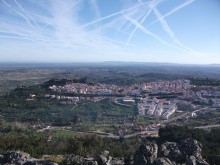
 From 14 to 16 March at Castelo de Vide (Portugal) was held an international conference on Small Towns and Environment in History – Pequenas Ciudades e Ambiente – organized by the international network Small Cities in Time (In-SCIT).
From 14 to 16 March at Castelo de Vide (Portugal) was held an international conference on Small Towns and Environment in History – Pequenas Ciudades e Ambiente – organized by the international network Small Cities in Time (In-SCIT).
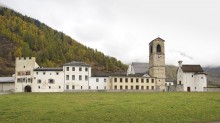
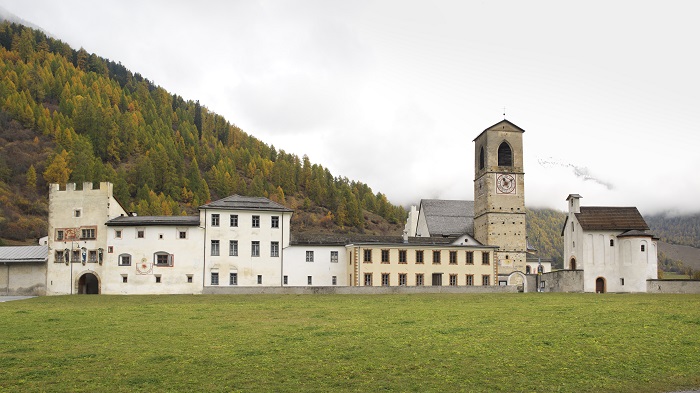
Image by: Rufino Emmenegger, Copyright: Foundation Pro Monastery of St. John.
LeVERAGE ICTs for Tourism – Information and Communication Technologies in Tourism for preserving LiVing hERitAGE
August 24-31, 2019 – Lugano & Müstair, Switzerland
The 2019 Summer School of the UNESCO chair will take place in Switzerland: the activities of the first two days (August 24th and 25th) will be run within the 2019 edition of the MEM Summer Summit in Lugano, then the group will move to Val Müstair, home to the Benedictine Convent of St John at Müstair, a UNESCO World Heritage Site.The focus this time is on living heritage, which is living practices and expressions passed down from generation to generation and constantly recreated by communities in response to their environment, their relationship with nature and their history. The importance of living heritage is not the cultural manifestation itself but rather the wealth of knowledge and skills that is transmitted.
The Summer School is conceived with the following characteristics:
– it is addressed both to an academic and a professional audience, in particular: Master and PhD students, researchers and academic fellows, professionals, in the field of digital technologies, heritage and tourism;
– it will take place from August 24th to August 31st;
– the first two days will be organized in Lugano, while then the group will be moved to Müstair, where there are a World Heritage Site and a biosphere reserve;
– the topic this year is the role of ICT in Tourism for preserving living heritage;
– applications are open until April 30th.
(Download: brochure)
More info can be found here: http://www.unescochair.usi.ch/activities-2/summer-schools/summer-school-2019

Text and photos by Caterina Sbrana.
Dear readers,
this is the second report I realized on my trip to New York following the one on 9/11 Museum& Memorial, and it regards the system created by the New York Public Library that counts more than 50 million items. I personally was very responsive to the organization of the libraries that permit worldwide to find a huge quantity of materials for study and researches.
The New York Public Library (NYPL) system actually includes 92 libraries situated in different districts like Bronx, Manhattan and Staten Island. Humanities and social sciences, performing arts, black history and culture, business and industry are the topics of the four research centers that take part in NYPL System.
The collections of the New York Public Library compose of more than 50 million items, thanks to the work of generations of curators over the past 160 years. The collections have been organized into more than 100 major topics.

Screenshot https://digitalcollections.nypl.org/collections/
Searching the website of the NYPL we can find out, by clicking on “Research”, a huge digitisation project carried out by different research teams, out of which 180,000 documents are available since 2016 in digital version and in public domain. These documents include: maps, posters, manuscripts drawings, photographs like those of Racioppo Larry, Barvin Bill, Morris Rosenfeld, Walter Silver, Martha Swope etc., letters, ancient texts, charts, totally open access for everybody, from children to adults.
We can read on the website that “everyone has the freedom to enjoy and reuse these materials in almost limitless ways. The Library now makes it possible to download such items in the highest resolution available directly from the Digital Collections website. […] The release of more than 180,000 digitized items represents both a simplification and an enhancement of digital access to a trove of unique and rare materials: a removal of administration fees and processes from public domain content, and also improvements to interfaces — popular and technical — to the digital assets themselves“.
The New York Library in 476 5th Ave is located in an extraordinary building, the Stephen A. Schwarzman’s Building: study rooms, research rooms, exhibitions… in a space that takes your breath away. On my trip to New York for Digital Meets Culture, I went to this building where is one of the locations of the public libraries in New York. On the first floor, at the information point, I presented myself explaining that I was writing an article for our magazine and that I wanted to consult some documents. I filled out an application form using one of the many computers available. I specified my residence time in New York and in a few minutes I got my own free library card.With it you can borrow books and materials that can be returned in any of the libraries that are part of the NYPL system. Also, the card allows you to receive notices, download digital media, search hundreds of electronic databases, reserve a computer, and more.
Searching the Public Domain Digital Collections we can find a lot of documents, as the Street view of New York City’s Fifth Avenue how it was in 1911 compared with 2015’s Google Street View; manuscripts of American literary masters like Walt Whitman, Henry David Thoreau, and Nathaniel Hawthorne; Medieval and Renaissance illuminated manuscripts from Western Europe; Book Art and illustration; over 20,000 maps and atlases documenting New York City, North America, and the World etc.

Street view NY Fifth Avenue: 1911/2015 comparison
In the section “ALL COLLECTIONS” it is possible to do a research by keywords related to a country, a topic, an author etc… Let’s search the H. Thoreau manuscripts on the web page: on the left we find information about the Collection, the author, date of manuscript creation, library locations, topics, notes; in the middle of the web page there are the digital documents. A symbol on the left of the images shows if the document is composed by more than one page and if it is possible to print it.
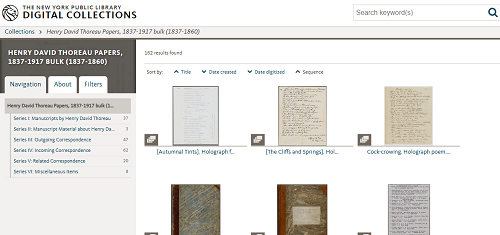
Screenshot: H. Thoreau manuscripts
The mission of The New York Public Library is “inspire lifelong learning, advance knowledge, and strengthen communities“. Nowadays technological means allow us to preserve and spread culture by sharing documents, old as well as modern, in digital platforms that allow everyone to enjoy cultural goods, by deleting physical distances. There is a double advantage: the preservation and the dissemination of documents belonging to the cultural heritage of each individual community.
NYPL website: https://www.nypl.org/
Access to Public Domain items: https://www.nypl.org/research/collections/digital-collections/public-domain

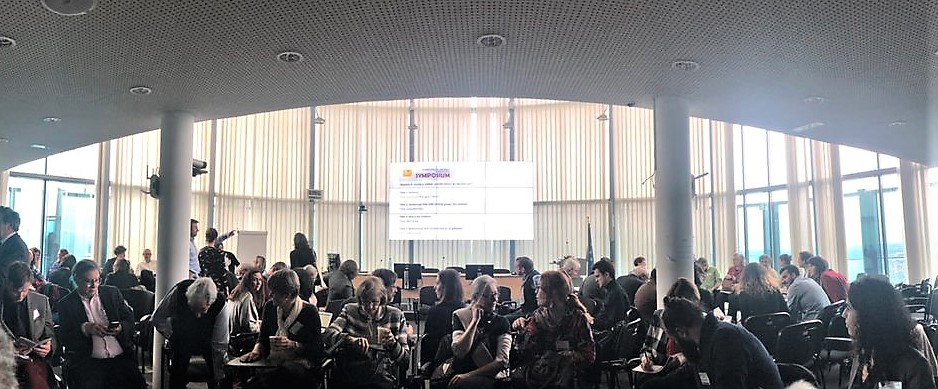 The latest successful Symposium of REACH Social Platform was joined by a great number of international professionals engaged in the field of cultural heritage. The event titled “Horizons for Heritage Research – Towards a Cluster on Cultural Heritage“, took place the 20th of March, in Brussels and was followed by a second day of Policy Debate meeting which contributed to complete the objectives and reflections of the event.
The latest successful Symposium of REACH Social Platform was joined by a great number of international professionals engaged in the field of cultural heritage. The event titled “Horizons for Heritage Research – Towards a Cluster on Cultural Heritage“, took place the 20th of March, in Brussels and was followed by a second day of Policy Debate meeting which contributed to complete the objectives and reflections of the event.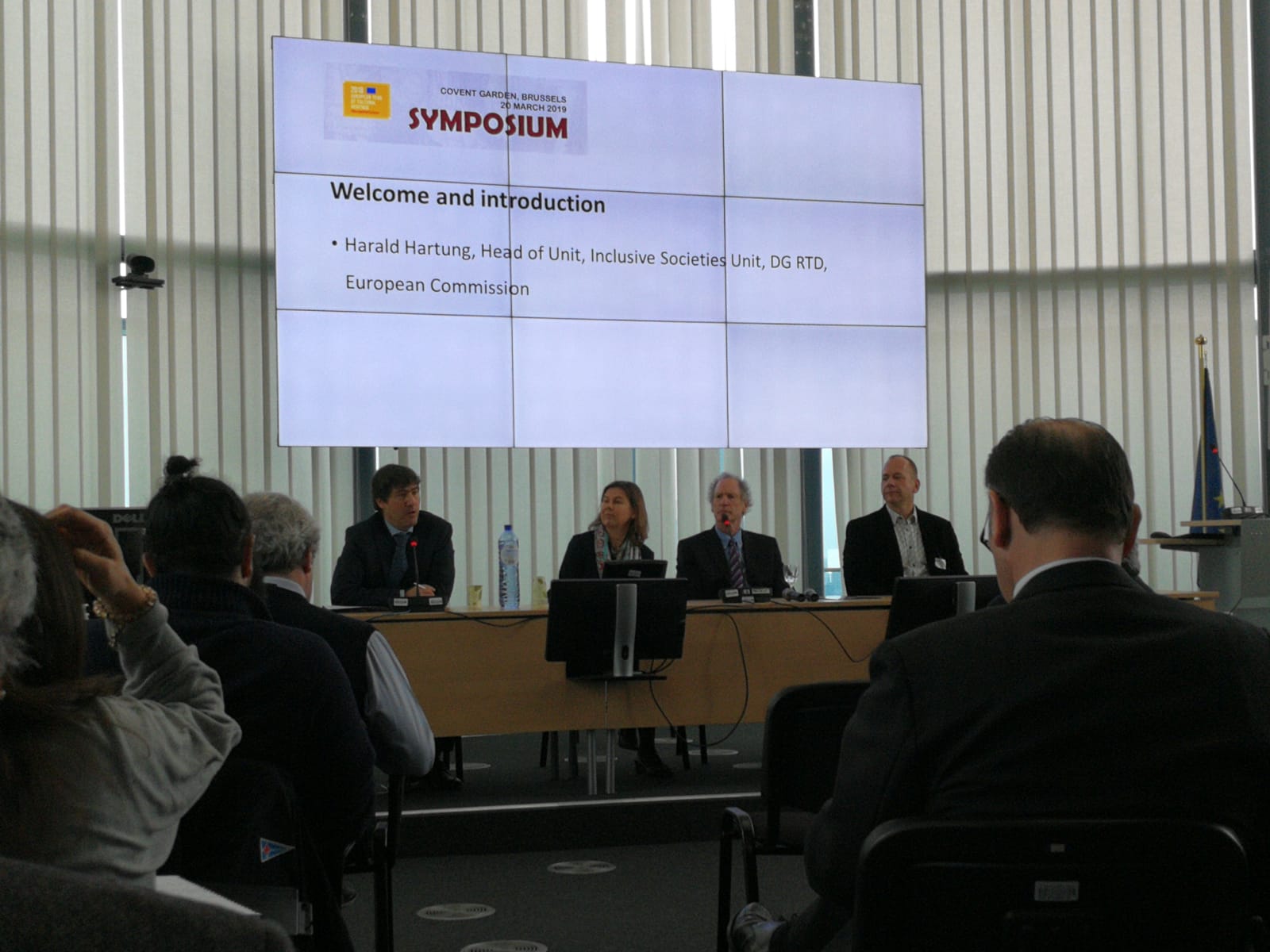 Four tables were set up each one developing a specific topic:
Four tables were set up each one developing a specific topic:
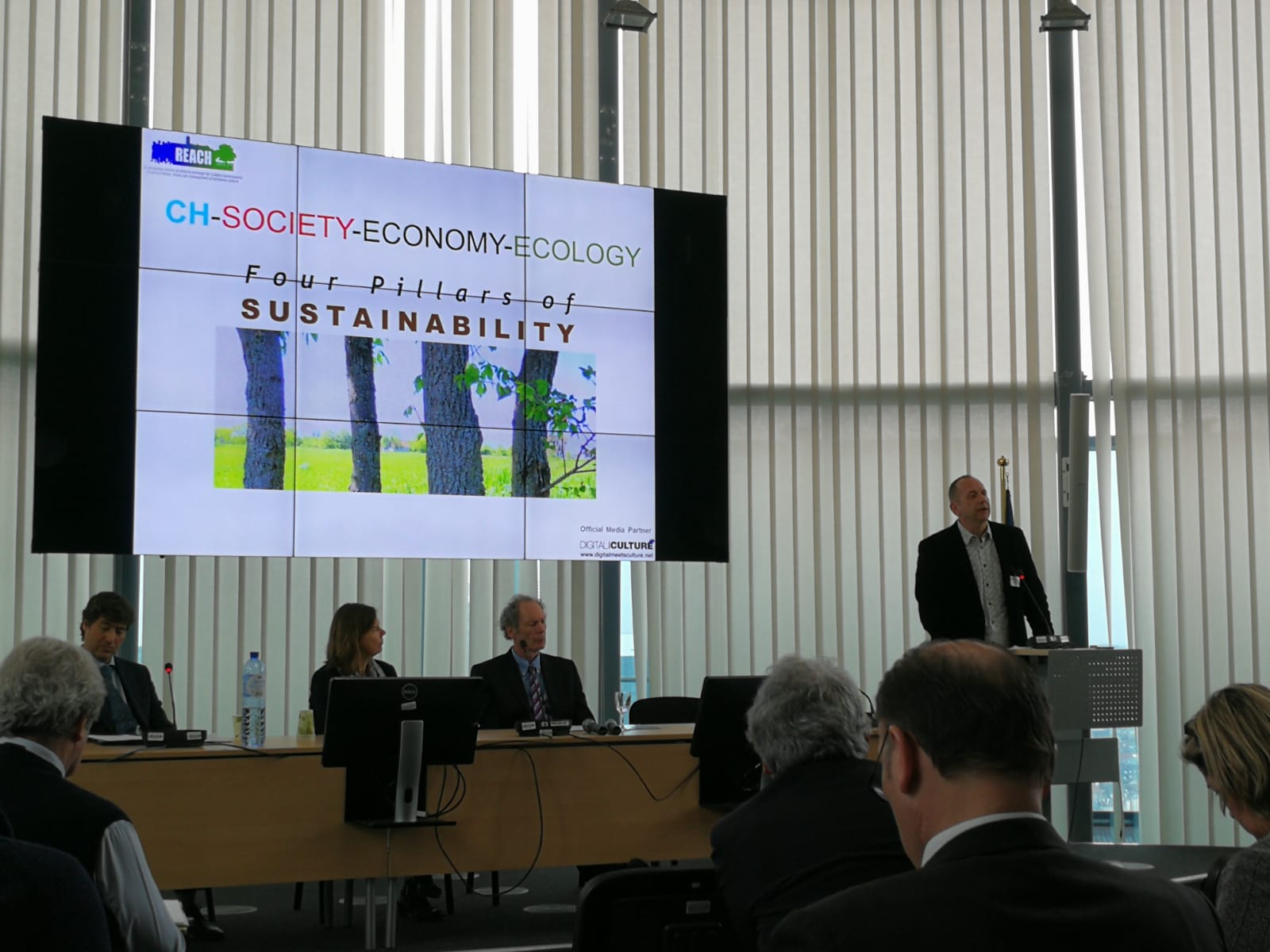 The delegates split in 4 groups again, to carry on the discussion around 4 more themes:
The delegates split in 4 groups again, to carry on the discussion around 4 more themes: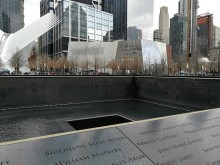
Text and photos by Caterina Sbrana.
 Dear readers,
Dear readers,
I recently started my work at DigitalMeetsCulture, because I am very interested in art and cultural heritage, and also in the relationship between art and digital technologies.
I was in New York last month, and I had the chance to visit some of the most important museums and libraries which undertook the process of digitizing culture: I’ll be happy to write about it in my next articles. I would firstly like to tell you my experience in the 9/11 Museum and Memorial.
The National September 11 Memorial & Museum non-profit Foundation was born in order to preserve the memory of the 2,983 people who died because of the two terrorist attacks of February 26, 1993, and September 11, 2001.
That’s why the Foundation has collected e-mails, testimonials, artifacts, and they also have digitized photos, tapes and videos, to create, thanks to the support from the victims’ families, a constantly increasing digital archive and a physical space where it is possible to get in touch with that history.

Ground Zero: North Tower; on the background 9/11 Memorial & Museum
I arrived in New York in the evening, and the next morning I was already inside the Memorial. The National Memorial 9/11 at Ground Zero in Manhattan is not just an exhibition in memory of the victims; it is an on going experience that involves all the senses. I can’t explain why I choose Ground Zero as my first destination. In 2001 I was two years old, and I did not directly witness this terrible event. However, history is being studied and many documents on the web allow everyone to relive those dramatic moments.
I downloaded the Museum’s free app from the play store and I began my visit accompanied by the voice of Robert De Niro: “Welcome to the nine/eleven memorial museum, I am Roberto De Niro, I will be your guide […]“. He first comments on a great photograph portraying Manhattan a few minutes before the fall of the twin Towers. The photo is at the beginning of the tour.
I moved from one room to another and I started to look at visitors’ faces: they were stunned, no one was speaking, there was a constant reverence. It was as if people were not able to speak; they looked astonished, and they followed the images that were scrolling on the monitors.

Immersive experience at 9/11 Museum & Memorial
Photographs and videos are directly projected between objects onto the walls of the museum; touch screen displays are connected to a database that helps the visitors to search for the victims and to localize their names in Ground Zero monument.
Testimony of those who assisted to the dramatic events resounds in the museum: white sentences, projected on the columns of a dark room, draw a map of the World, and at the same time, recorded voices from the witnesses fulfil the room, even covering the sound of visitors’ footstep.
At the centre of the room, bounded by the ground of the North Tower, a giant steel column bears witness of what it is left from that day when the two towers collapsed after the impact of the hijacked planes. Visitors can sit on benches that are available all over the halls and they can hear random stories using audio guides.
On a wall at the opposite side, a timeline shows key terms or group of words about 9/11 appearing on the newpapers from all over the World, sourced by a search algorithm. An interactive timeline, displaying the events minute by minute, accompanies sightseers through the museum paths. Personal objects, glasses, shoes, huts, watches, remains of the Towers, police cars, firefighters trucks, photographs, voices and sounds help the visitors to immerge themselves in the drama of the terrorism.
I had the pleasure of meeting a volunteer: he was at the “Ladder 3 Truck”, a fire truck destroyed by the heat. He told me that USA is not the same since that day. You can see everywhere barriers and a big deployment of police officers.

9/11 news from the world
The conclusion of audioguide is: “The 9/11 story demonstrates the consequences of terrorism on individual lives and its impact on communities at the local, national, and international levels. […] One of the things 9/11 teaches us is that, try as we might, we may not always be able to prevent a terrorist attack [..] what we do have control over is how we respond.” The way we act demonstrates our human nature.
The database of the Museum is getting bigger and bigger every day, containing nowadays 40,000 printed and digital photographs, 14,000 artifacts, more than 3,500 oral recordings, and over 500 hours of video.
On the Museum & Memorial website it is possible to share personal texts and images in the Interactive 9/11 timeline. People can also get in touch with the Museum Collections to donate documents, objects, photos or other things that could be of interest.
Michael R. Bloomberg, Chairman National September 11 Memorial & Museum wrote: “The Memorial & Museum provide a place of reflection and remembrance. They are designed to help those who were most affected by the attacks to heal – and those with no memory of the attacks to understand losses that will forever be incomprehensible”.
Website: https://www.911memorial.org/
The Blog: https://www.911memorial.org/blog

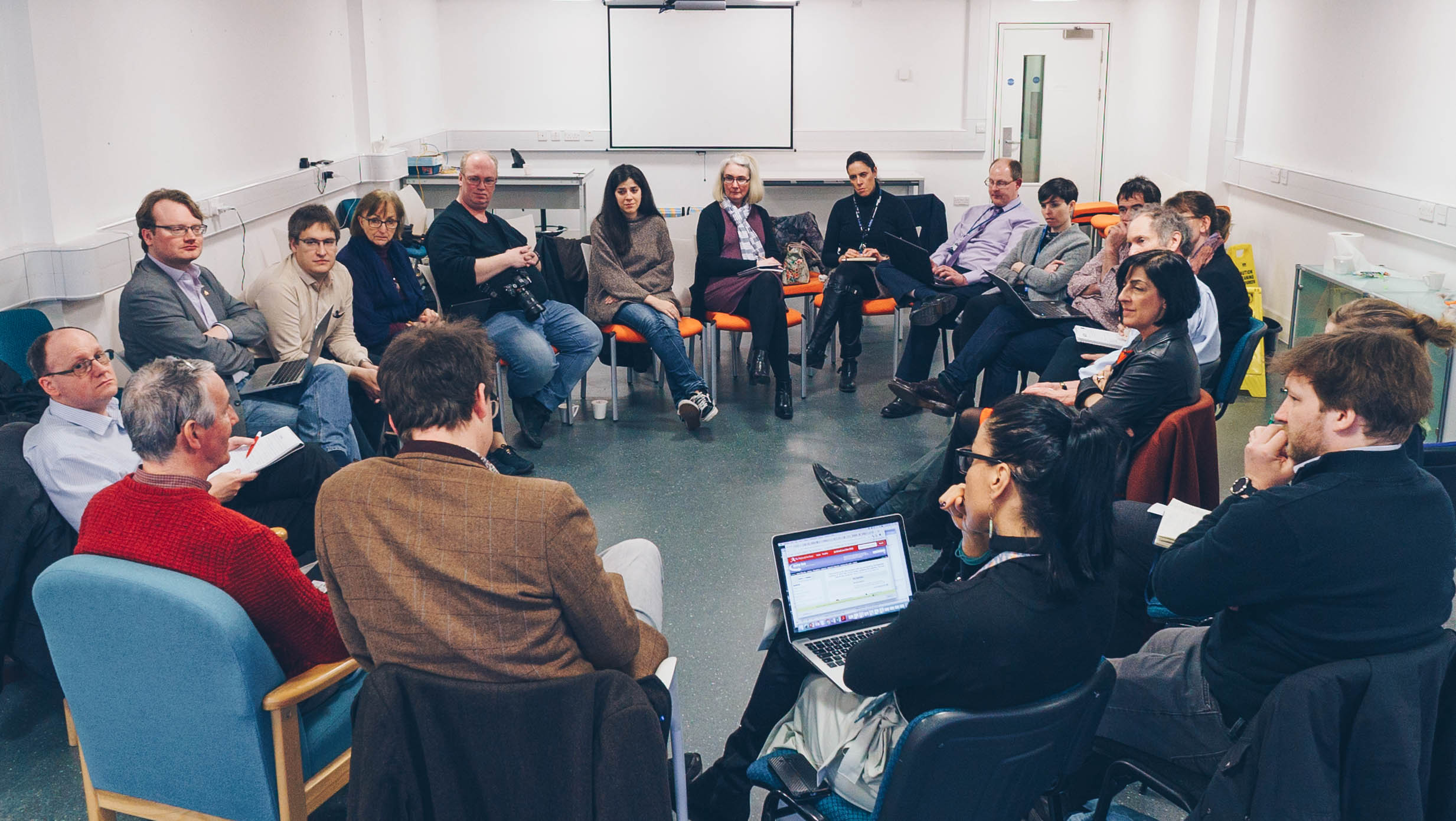 The REACH project recently held its latest workshop, hosted by Coventry University’s Centre for Dance Research. It had a wide ranging brief that, in addition to considering the REACH theme of participatory approaches, it also incorporated creative and entrepreneurial (re)-use of cultural and heritage.
The REACH project recently held its latest workshop, hosted by Coventry University’s Centre for Dance Research. It had a wide ranging brief that, in addition to considering the REACH theme of participatory approaches, it also incorporated creative and entrepreneurial (re)-use of cultural and heritage.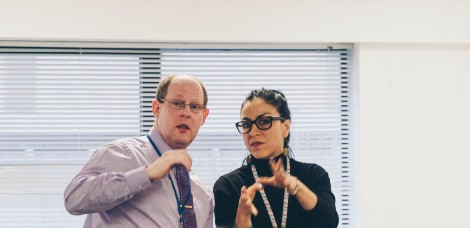 The next session started with Daniel Ockeleon (Noterik) using Qandr, an interactive tool for audience participation to ask questions of attendees. He then demonstrated MuPop/the pop-up museum and showed how to enhance a museum visitor’s experience and interaction via a mobile device. The museum theme was considered in a more traditional way, as Graham Black (Nottingham Trent University) described museums in the age of participation and the deliberations of institutions evaluating how to attract modern audiences. The final presentation of the morning was from Sally Hartshorne (University of Leicester) who provided stories of Leicester’s Cultural Quarter and described how places and spaces could be creatively (re)-used and their past highlighted to inform both residents and visitors.
The next session started with Daniel Ockeleon (Noterik) using Qandr, an interactive tool for audience participation to ask questions of attendees. He then demonstrated MuPop/the pop-up museum and showed how to enhance a museum visitor’s experience and interaction via a mobile device. The museum theme was considered in a more traditional way, as Graham Black (Nottingham Trent University) described museums in the age of participation and the deliberations of institutions evaluating how to attract modern audiences. The final presentation of the morning was from Sally Hartshorne (University of Leicester) who provided stories of Leicester’s Cultural Quarter and described how places and spaces could be creatively (re)-used and their past highlighted to inform both residents and visitors.
“Co-Interaction” is an Art group dedicated to the implementation of Hi-tech assisted artistic projects, composed by Svetoslav Kosev and Atanas Markov. Their new art installation, presented in Veliko Tarnovo on 15th March, is a natural corollary to two former interactive projects, namely “INTERACTIVE GENERATIVE FORMATIONS” and “VIRTUAL ARENA”.
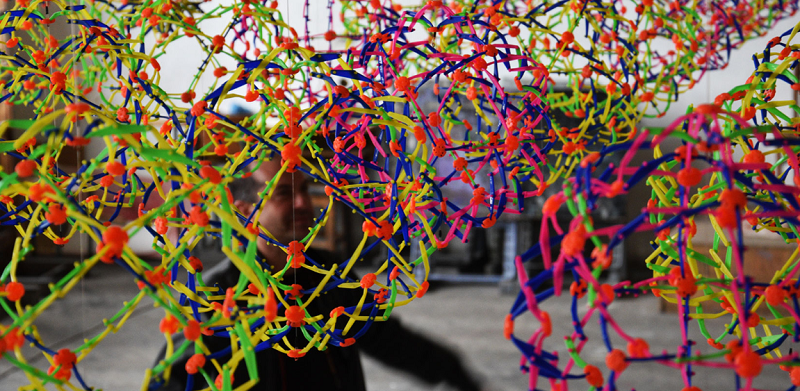
That’s how Svetoslav describes the project:
The essential difference between the new project and the previous ones is that in the former action takes place on a two-dimensional plane, on which images are being projected. The objects’ aesthetics is pre-defined and the movement of both viewers and participants in the installation is detected by a sensor. Thus, the viewers alter the appearance of the dynamic images on the go and become active part in their construction and perception.
With the project “INTERACTION WITH A BIOBOT”, we leave the two-dimensional plane and venture into three-dimensional space. The dimensions of the installation “event box” are 500х500х350 см. While discussing the project we came up with the idea to imitate a living organism that is able to react to “the threat” of approaching viewers. This idea is modeled over a behavioral reaction of a group of plants depicted in the movie “Avatar”. In the movie the protagonist touches a plant which triggers an instant reaction by all other members of the group of plants which withdraw within their roots. To design an installation of the desired scale within the viewers’ step-in zone however is quite risky. That is why we decided to raise the whole installation and the objects above viewers’ heads, which, of course, is much more complicated as an engineering solution and necessitates the involvement of an expert in the respective field.
The other problem that we had to solve concerned the nature of the object that was supposed to react to the participants’ presence and what type of reaction to model. It was at this point that I was reminded of a game children play on the beach. It involved throwing of a small spherical ball that expands in flight but contracts upon impact and squeeze. Later on it turned out that this toy was known in the scientific circles as the “Hoberman sphere”. We made a couple of experiments with “the ball” and it turned out that it can be made to expand and contract to pre-defined parameters with the aid of servo mechanisms. Then, on the basis of all the initially considered elements, the whole construction for the installation was designed. Naturally there were some problems within the process of construction. These were primarily related to the electronic circuits and Atanas had to solve them on the spot, which he masterfully did.
All in all, our cooperation in which I contributed with the conceptual and the visual part, Atanas was entirely engaged with the technical part, and engineer Anton Krustev contributed with the construction design, lead to the completion of the project and the new installation.
Co-Interaction website: http://www.co-interaction.com/co-interaction/index.php/en/
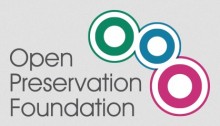
 The Open Preservation Foundation will be running two online hack weeks during 2019. The first, which will take place on 8-12 April, will focus on development. A second hack week will take place in September, with a goal to update and create new documentation.
The Open Preservation Foundation will be running two online hack weeks during 2019. The first, which will take place on 8-12 April, will focus on development. A second hack week will take place in September, with a goal to update and create new documentation.
What’s the goal?
The aim of the development hack week is to improve JHOVE for the benefit of its users. We plan to concentrate on the ‘quick fixes’ to reduce JHOVE’s issue list and make it easier to assign bug fixes and new features to future releases. There’s a variety of tasks so everyone should be able to find something they can work on given the time, knowledge and skills available to them.
Why participate?
We need your help! JHOVE is an open source validation tool that is widely used across the global digital preservation community. It is free to download, use and amend to meet your organisation’s requirements. However, it is not free to host, maintain or develop. Only OPF members support JHOVE financially through part of their membership fees.
We are only a small team and are responsible for maintaining other tools in addition to JHOVE. We receive development effort contributions on an ad hoc basis from our members and the digital preservation community so would like to say a big THANK YOU to everyone who helps to improve JHOVE for the benefit of the whole community.
More details and registration available at: https://openpreservation.org/event/jhove-hack-week-april-2019/

Enrolments are now open for the second volume of the MOOC (Massive Open Online Course) on Tourism Management at UNESCO World Heritage Sites. Anyone is welcome to register regardless of whether they have participated in the first volume or not!
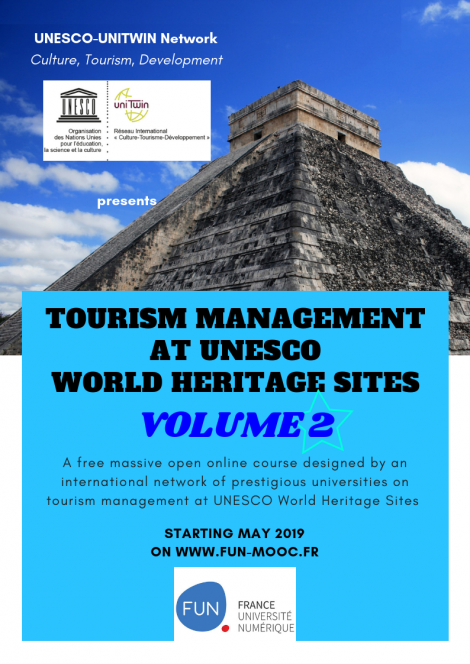 The great success of the first volume (more than 6’500 learners from 166 countries) spurred the release of this brand new open online course. It is designed and run by the international university network UNESCO UNITWIN Network “Culture, Tourism, and Development”, led by Paris 1 Panthéon-Sorbonne University (Paris, France).
The great success of the first volume (more than 6’500 learners from 166 countries) spurred the release of this brand new open online course. It is designed and run by the international university network UNESCO UNITWIN Network “Culture, Tourism, and Development”, led by Paris 1 Panthéon-Sorbonne University (Paris, France).
Highly profiled researchers in the field share their knowledge on the main aspects of this topic and provide insights into the main tourism issues at UNESCO World Heritage Sites, specifically tackling such matters as heritage communication, management and marketing.
Each instructor provides a unique view on the topic, so as to form a rich and various concert of voices.
Such a free online course might be of great interest for Professionals in the Tourism Industry, Policy Makers, Researchers, Students… especially if they are committed to promoting tourism at sites of Outstanding Universal Value, while at the same time concerned with their conservation.
The course, in English, is completely free and open, and is going to be delivered at the start of May 2019 on the major French platform, FUN MOOC. It is organized in 6 thematic units, unveiled every week. Their structure foresees ad-hoc didactic videos and documents, as well as quizzes, additional materials, and activities aimed at fostering experience sharing among participants. Learners successfully completing the course will then receive a free course completion certificate.
For further information and to register, please visit the following page:
https://www.fun-mooc.fr/courses/course-v1:Paris1+16012+session01/about

 Are you a rural community that is searching for innovative solutions, using your local heritage potential as a catalyst for economic competitiveness and/or sustainable and inclusive growth?
Are you a rural community that is searching for innovative solutions, using your local heritage potential as a catalyst for economic competitiveness and/or sustainable and inclusive growth?
The RURITAGE project, funded under H2020, is looking for 6 rural areas located primarily in the EU and in the EEA and 3 in the16 ENP countries, which would like to transform themselves in in sustainable development demonstration laboratories, through the enhancement of their unique Cultural and Natural Heritage potential.
Already 19 case studies, also called Rural Heritage Hubs, are involved in the project. These 19 Rural Heritage Hubs represent 13 good practice examples or Role Models and 6 Replicators, which will implement innovative heritage-led solutions. Together with several multidisciplinary expert institutions, these Rural Heritage Hubs aim to demonstrate that Cultural and Natural Heritage can emerge as a driver for sustainable regeneration and development.
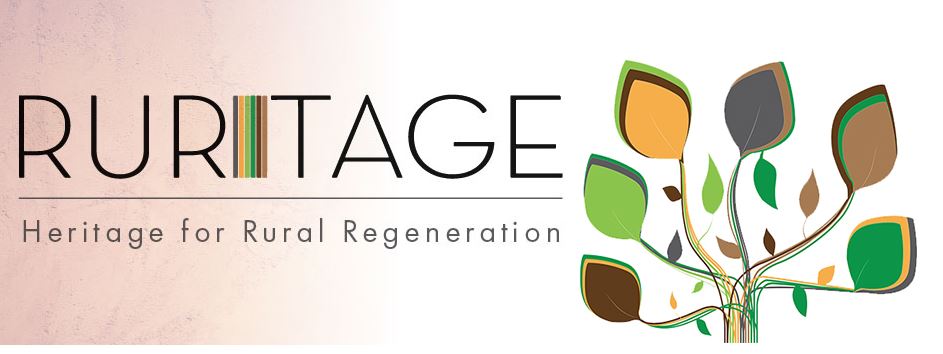 In particular, RURITAGE will:
In particular, RURITAGE will:
– Make successful practices and solutions on heritage-led rural regeneration available and replicable;
– Identify the financial resources needed to preserve cultural heritage in rural areas;
– Promote the engagement of rural communities in the decision-making processes;
– Provide roadmaps for the development and long-term sustainability of heritage-led regeneration strategies.
Based on past research and experiences, RURITAGE has identified 6 Systemic Innovation Areas, namely Pilgrimage,Sustainable Local Food production,Art & Festival,Migration,Resilience, and Integrated Landscape Management, which represent the ways in which cultural heritage acts as a driver for regeneration of a rural area and its economic, social and environmental development. Each of these topics is represented in the project by at least 2 Role Models and 1 Replicator.
Read more about this Call and RURITAGE Project
Application form
#participateinculture #societalvalueofculture #unchartedculture 3D 3D digitisation AI Amsterdam animation Antonella Fresa archaeology Athens audiovisual augmented reality Berlin big data Brussels call for papers Caterina Sbrana citizen participation Citizen science Civic Epistemologies co-creation conference Conference and events conferences and events conformance check Coventry University creative industry CULTURA cultural heritage cultural participation cultural tourism dance DCH-RP digital art Digital Cultural Heritage Digital Heritage digital humanities digital libraries digital preservation digitisation digitization DPF Manager e-Infrastructures E-Space EAGLE education EGI EUDAT EUreka3D EUreka3D-XR Euromed Europa Nostra Europeana Europeanaphotography Europeana Space European Commission Eötvös Loránd University file formats Fred Truyen Girona Granada Hackathon INCULTUM incultum project innovation IPR KU Leuven Linked Heritage London MediaConch MEMOLab museums networking open source software Paris participatory approaches participatory approaches to cultural heritage PDF/A performing arts Photoconsortium photography Pisa PREFORMA preservation Promoter REACH project RICHES Sarah Whatley standards sustainable tourism UGR University of Granada UNCHARTED community UNCHARTED event UNCHARTED Project VeraPDF Vienna WEAVE Webinar workshop